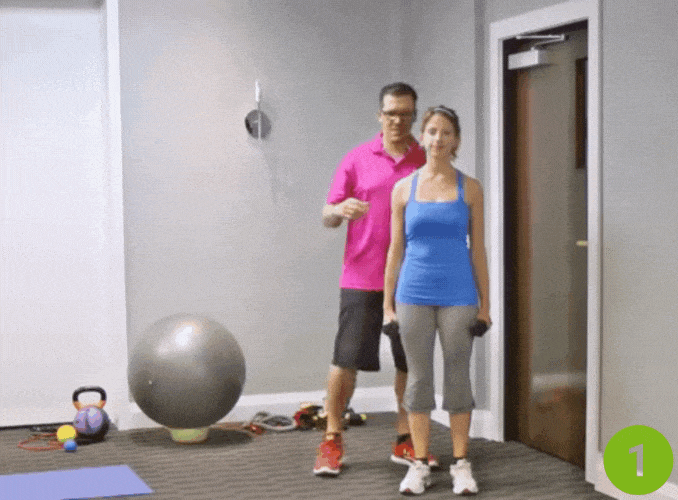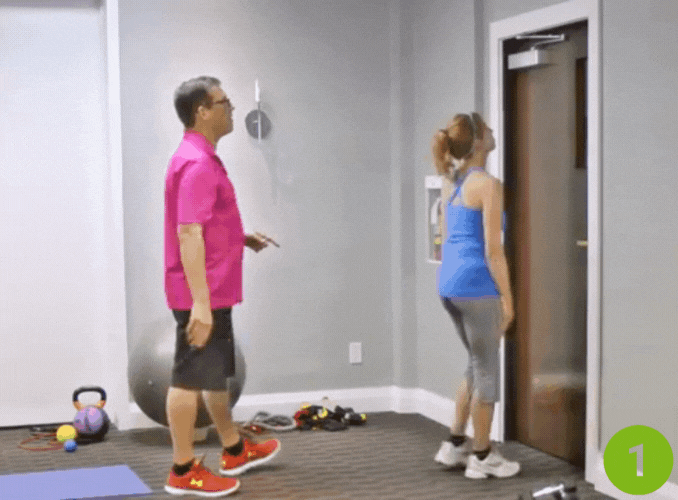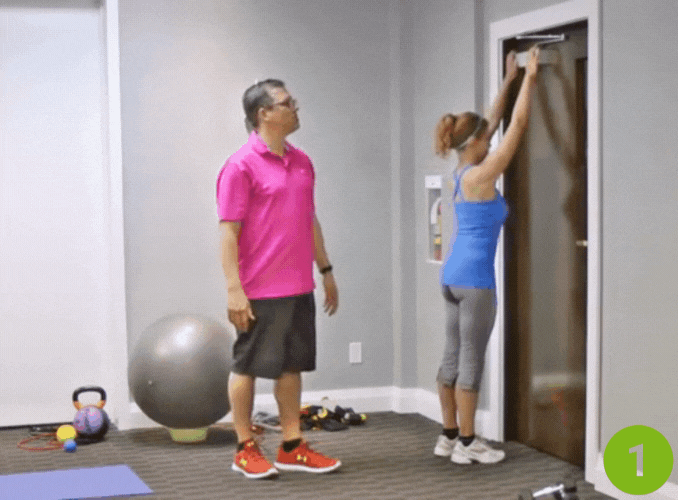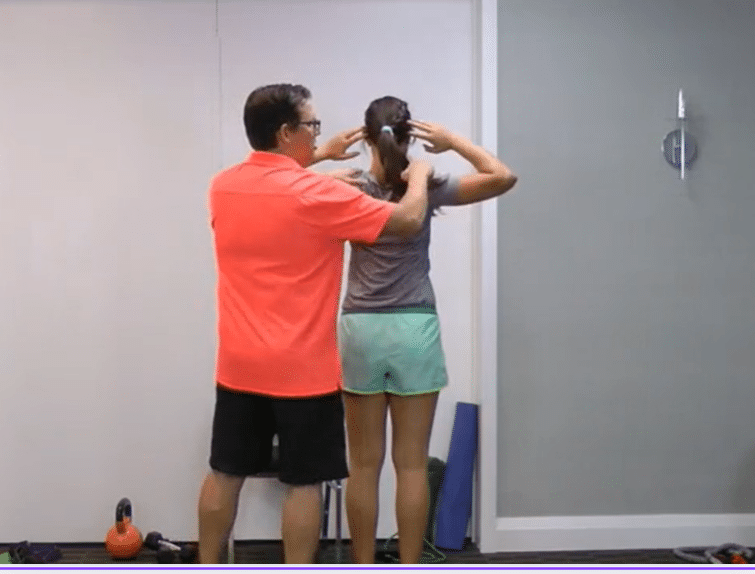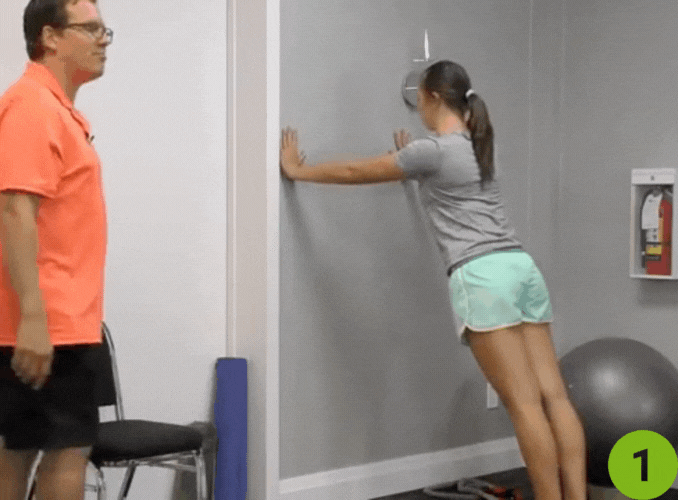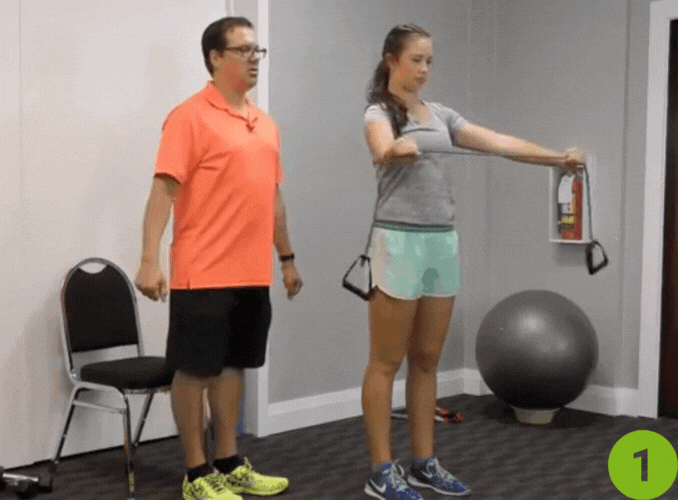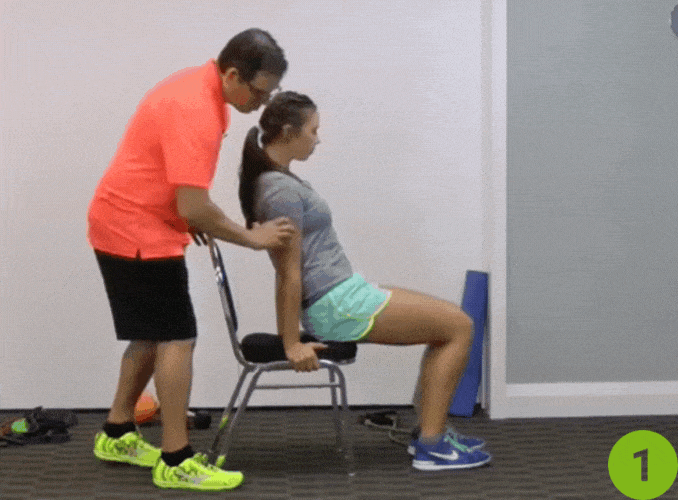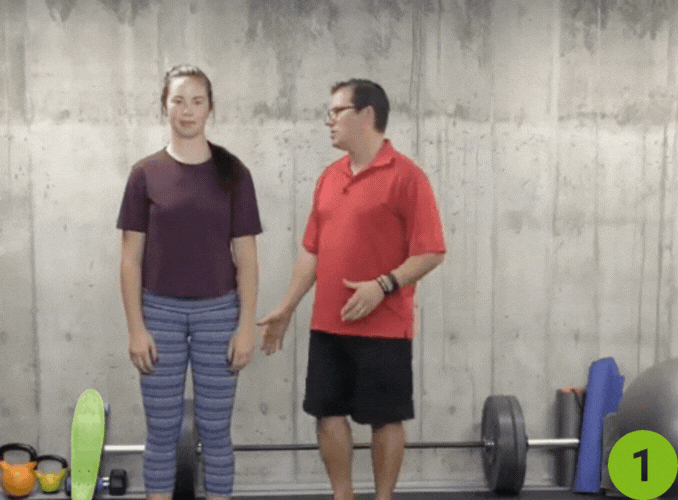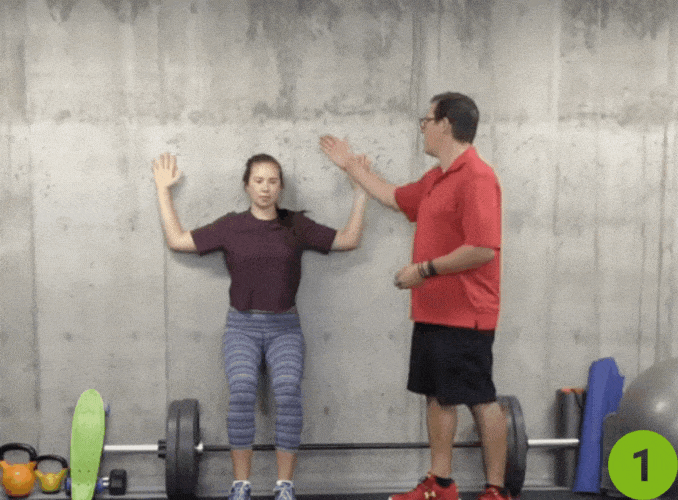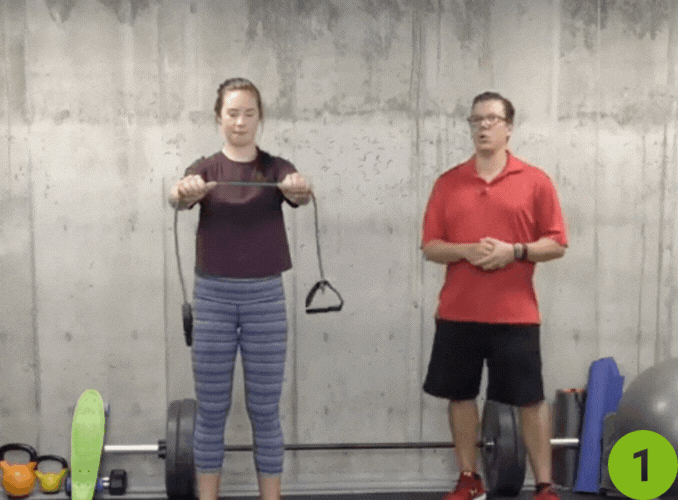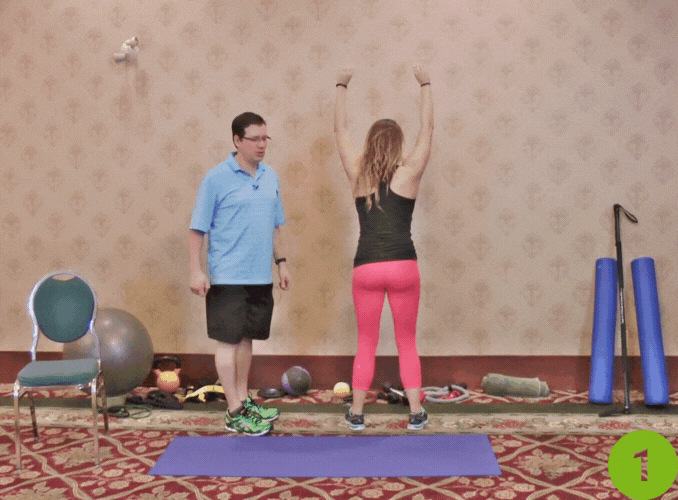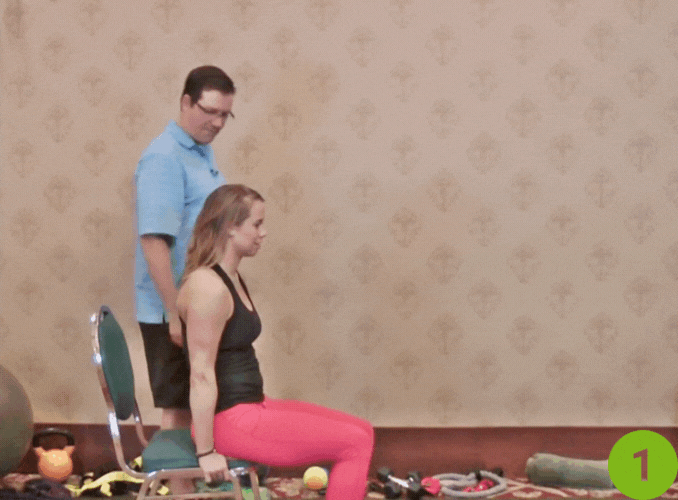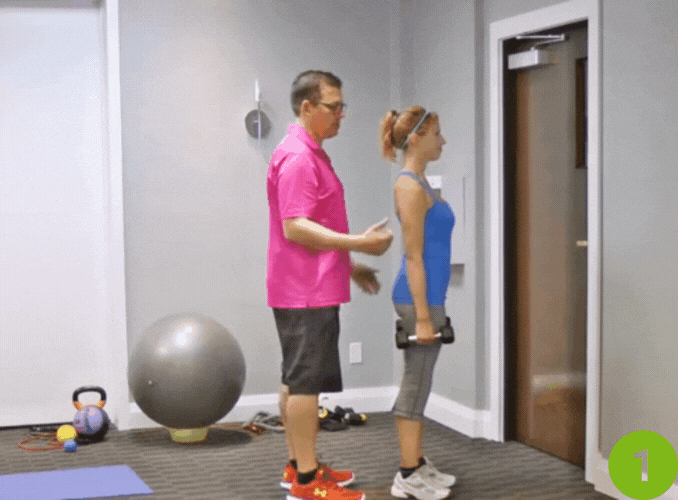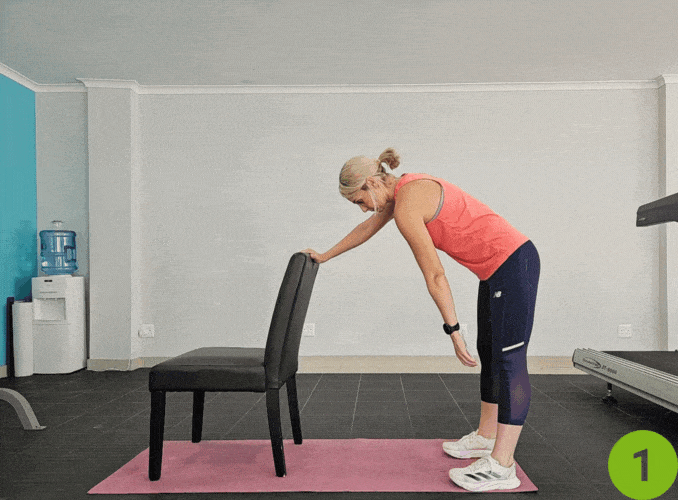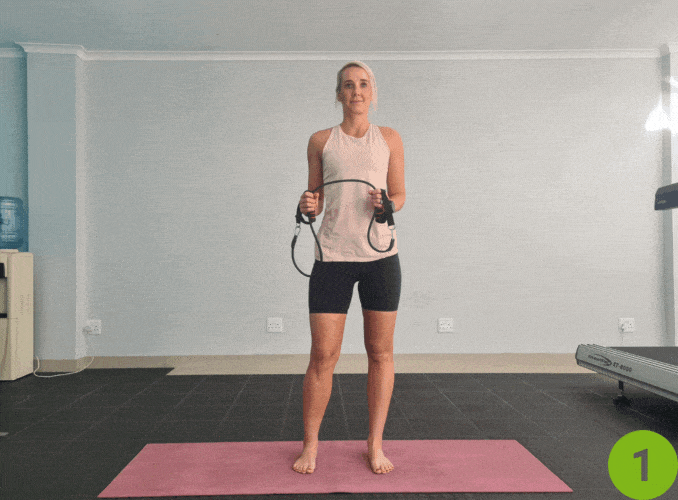
Shoulder pain [1] is a common issue that can arise from various causes, including poor posture, overuse, injuries, underlying medical conditions, or a lack of exercises for shoulder pain.
Whether you’re dealing with a frozen shoulder [2], rotator cuff issues, or general muscle soreness, targeted exercises can help improve movement, reduce pain, and prevent further joint problems.
Medical Disclaimer: The information in this blog is for enlightening and educational purposes only and is not intended as medical advice. The content in this post is not meant to substitute for a professional medical diagnosis, advice, or treatment. Always ask advice from your physician or other qualified health providers with any questions you may have regarding a medical condition.
1. Standing Back Arch
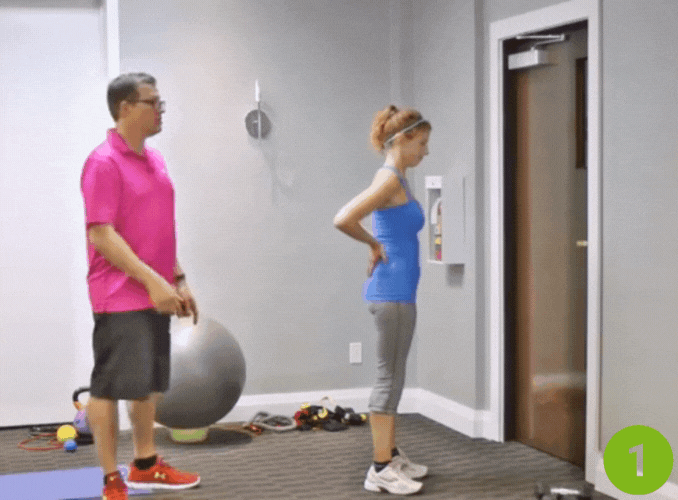
- Perform one set of 5 reps in a smooth, controlled movement with a good stop at the end position for 1 to 2 seconds.
- And we are looking for a light stretch in the shoulder.
- And then light mobility and movement happening in the spine.
In standing position, but the hands on the hips get a good stretch in the shoulders and arch the back to 2. Downward Punch Exercise
In this exercise, we are going to use some weights or dumbbells. If you do not have dumbbells, you can go without weights, but weights help a little bit when it comes to guiding the movement. In this exercise, we are putting the shoulder in a better position when punching down and decreasing the stress in the upper neck area and then mid-back area. This is more of a mobility or posture exercise, decreasing tension in the muscles exercised. Perform one set of 5 reps in a smooth, controlled movement, holding the bottom position for a stop of 1 to 2 seconds with light intensity. This is an excellent exercise to Modified Vertical Hanging Exercise
Women often have good flexibility in the shoulders but lack activation, endurance, and strength in their midback shoulder areas. The full Nelson elbows back exercise targets the midback shoulder blade muscles. You may feel some activity or small movement in the upper traps. Perform one set of 5 reps in a smooth, controlled movement, with a good stop at the end for 1 to 2 seconds. You should feel the muscles in your midback and shoulder blade area working. There could be some fatigue as opposed to a burning or a muscle-building feeling through this exercise. This targets the serratus anterior, a deep muscle in the armpit with poor activation, strength, and then endurance in women. Perform one set of 5 reps in a smooth, controlled movement, with a good stop at the start and end for 1 second each in this simple exercise. You should feel the muscles in your shoulders and then muscles deep down through your armpits working. We’re working on the midback area with arms straight through this exercise. Now at an angle with the high arm, you are working on the lower part of the shoulder blade. You are targeting the lower shoulder blade’s middle and lower parts with the lower arm. Perform one set of 5 reps for each position in a smooth, controlled movement with a good stop at the end. You should feel the muscles in your shoulder blades working as you move your arms from a straight line to an angled position. This may be challenging as we target specific muscles that lack activation, endurance, and then strength. This simple exercise targets the lower shoulder blades while relaxing the upper trap muscles, which are usually tight or stiff in most women. Perform one set of 5 reps in a smooth, controlled movement, with a good stop at the end for 1 to 2 seconds. You should feel the muscles in your shoulder blade, specifically working the lower part. Perform one set of 5 reps in a smooth, controlled movement with a good stop and good contraction between shoulder blades in each of the movements. This exercise helps break up the tension in the upper trapezius by contracting and relaxing the upper trapezius. It also helps improve the posture and activates the muscles around the shoulder blades and midback area. Perform one set of 5 reps in a smooth, controlled movement, which is relatively slow with a good stop at the top position for 1 second. With this starting position, you are getting a stretch in the shoulders. Placing your head, midback, and hips up against the wall helps you with good posture alignment. As you bring the hands closer together, you are stretching throughout the shoulder and working on flexibility and then mobility of the shoulder. Perform one set of 5 reps each way in a smooth, controlled movement with a good stop at the end with light intensity. In this exercise, we are working on the flexibility and then mobility of the shoulders. Perform one set of 5 reps of each of the positions in a smooth, controlled movement with a good stop at the end with moderate intensity. In this exercise, we are targeting the muscles in the midback, rhomboids, and middle fibers of the trapezius. We want to decrease how much activity we have in the upper trapezius while also working on the muscles around the shoulder blades. Vertical Hanging Exercise is the best way to build, strengthen and define your back muscles. This exercise will help you build stronger and more defined shoulders, but also develop the muscle in your lower back. With the advancement of technology, vertical hanging exercise has been brought to the forefront. Not only does it provide a good balance of cardio and strength training, but it is also low impact on the joints. The best part about this form of exercise is that you can do it anywhere with little effort. Seated push-ups are a great way to work on your upper body and core strength. These types of push-ups allow you to maintain balance while working the muscles in your arms, chest, back, shoulders, abs, and legs. By using your hands on a chair or table for stability, these exercises will help you build a stronger core and prevent injury. They also provide an effective way to strengthen your triceps and pectoral muscles. Seated push-ups require some coordination but are a great move to add to your exercise routine. This is a simple move that can be done anywhere. For this exercise, you need to use a small dumbbell. Modification for Frozen Shoulder: Use smaller circles and avoid overextending your arm. If the movement causes pain, start with gentle side-to-side swings instead of full circles. For this exercise, you need to use resistance tubing. Shoulder pain may not be a life-threatening medical condition, but without the right approach, the pain may limit your arm movement and affect the quality of your life. Your shoulder pain may affect your activities of daily living, such as: Non-invasive or conservative approaches are used to initially treat shoulder pain. During the early stages or uncomplicated cases of shoulder pain, the treatment goals are relief of pain and restoration of the normal function of the shoulder. These goals can be achieved through rest, ice and heat application, compression, and then pain medications and exercises. Prevent performing activities that aggravate your shoulder pain. If your shoulder is injured or in pain, the most immediate and essential action is to reduce or stopping using the injured arm for about 48 hours. Avoid heavy lifting and overhead activities until your shoulder feels better, which may take 4 to 7 days after shoulder pain occurs. Resting the affected shoulder can reduce the swelling and then the pain. It is important to emphasize that complications may arise when the shoulder area is immobile for a lengthened period. Pain-free shoulder movements are essential to keep moving. It is suggested to perform simple isometric exercises during shoulder pain to activate the shoulder muscles. This is discussed in the next section. The application of ice reduces the pain and then inflammation during the first 24 to 48 hours following your shoulder injury. You may put an ice pack, a bag of frozen vegetables, or a towel filled with ice on the affected shoulder for 15 to 20 minutes at a time, 4 to 8 times a day. Apply ice for about 20 minutes. Never apply ice directly to the skin as it may cause a burn. Use a protective barrier, such as a towel, between the ice and the skin. You can also apply ice after activities to control inflammation and pain. Everyone responds to ice differently. Try it out and see how your shoulder responds. It should help decrease inflammation, pain, and then recovery from activities or exercise. Heat can cause vasodilation and may cause more swelling and pain. The use of heat should be avoided for the first 72 hours. After 72 hours, when the pain and inflammation have improved, you may start heat applications to relax tightened muscle tightness. Heat should be limited to 20 minutes per application. Nonsteroidal anti-inflammatory drugs, such as aspirin, ibuprofen, or naproxen, may help reduce mild to moderate shoulder pain. It is essential to talk with your doctor to see what pain medication is most suited to you. Compressing the injured area with elastic wrap may be helpful as well. This could help with controlling inflammation, keeping the shoulder out of painful movements, and your body in a more comfortable posture. American physical therapist Adam Wittbrodt, owner of Level Up Fitness and Training, emphasizes that strategic exercise can alleviate shoulder pain by strengthening muscles, improving joint stability, and enhancing blood flow. He recommends targeted exercises such as shoulder rolls, neck stretches, and yoga or Pilates to reduce discomfort and improve mobility. Wittbrodt advises starting slowly, focusing on proper form, maintaining consistency, and then incorporating recovery practices to effectively manage shoulder pain. Shoulder pain can limit your daily activities, but with the right strengthening and stretching exercises, you can improve mobility and relieve discomfort. If you experience persistent pain, consult a physical therapist to develop a personalized treatment plan. Start incorporating these exercises into your routine to support long-term shoulder health! If you want to heal, lengthen and strengthen the muscles and tendons near your shoulders, loosen your shoulder joint and reshape your shoulder so that you can reduce and eliminate your shoulder pain and prevent it from occurring again in the future, then
3. Vertical Hanging Exercise
4. Full Nelson Elbows Back
5. Wall Push- Up Plus
6. Three-way Tubing Exercise
7. Chair Push-ups
8. Shoulder Shrug
9. T- Raises Against the Wall
10. Shoulder L’s
11. Three-direction Band Pull
12. Vertical Hanging Exercise
13. Seated Push-Up
14. Downward Punch Exercise
15. Pendulum Stretch
16. Internal and External Rotation
Common Causes of Shoulder Pain
Treatment and Management of Shoulder Pain
1. Active Rest for Shoulder Pain
2. Ice and Heat for Shoulder Pain
3. Pain medications for shoulder pain
4. Compression of the Shoulder
Other Remedies for Shoulder Pain
How to Prevent Shoulder Pain
When to See a Doctor
Final Thoughts

